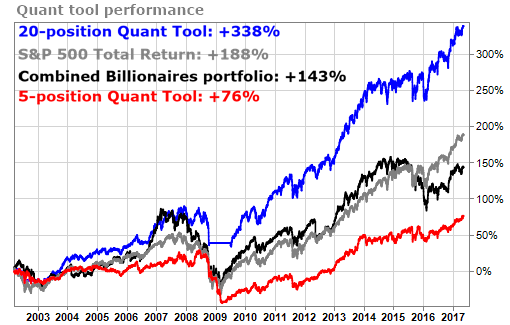How Many Stocks Should You Own?
It’s probably one of the more controversial aspects of my research… but I’ve been a big advocate of individual investors having more concentrated portfolios.
I hear from subscribers all the time who tell me that they have a hundred or more stocks in their portfolio. If you’ve got that many stocks in your portfolio you are never going to beat the market indices because you are essentially running your own market index.
If you’re not gunning to beat the market indices then you might as well just buy a market index with most of your money and then go do your gambling in Las Vegas with your play money. You’ll likely make more money and have more fun.
OK… so assuming that you agree with me by this point, the question is, how much concentration is the right amount of concentration. About how many stocks should you have in your portfolio? That’s the question that I tasked my research team to answer this week.
For the past year or so, I’ve been advocating for portfolios of 15 to 25 stocks for the core holdings of individual investors. I have to admit that I arrived at those concentration levels by eyeballing optimal portfolio sizes built from the recommendations of several investment research firms.
I analyzed all of the Stansberry Research Alliance recommendations and found that a portfolio of 20 stocks produced consistently good results. I analyzed the Oxford Club Communique recommendations and found that a portfolio of 20 of their recommendations also performed well.
20 recommendations seemed like a good number intuitively as well. I’m a big believer that you should be able to name all the stocks in your portfolio and 20 stocks seemed like enough stocks to be diversified and still be able to identify them all by name.
I still think that a 20 stock portfolio is a great starting point for most investors but is 20 the optimal number? Could there be a better number of stocks to have in your portfolio?
Last week we saw that a highly concentrated portfolio of just 5 stocks definitely wasn’t the right answer. We back-tested our Billionaire Quant Portfolio strategy with an upper limit of 5 positions at any one time.
The red line on the chart below shows pretty clearly that there is such a thing as too much concentration… even when you’re starting from a great base of investment ideas from the likes of Warren Buffet and Carl Icahn.

The 20 stock portfolio (blue line above) dramatically outperformed the 5 stock portfolio (red line above). But could we have done better?
For the past week we’ve been back-testing portfolio sizes of stocks ranging from 5 to 100 stocks… adding 5 stocks at a time as we went along. All of these portfolios were based on the database of billionaire investment ideas that we’ve been developing for the past several months.
I’m excited to share with you here for the first time… exactly what we found.
The chart below shows the average annualized gain of each different portfolio size that we tested. The number of stocks in each portfolio is on the horizontal axis and the average annualized gain is the vertical axis.

For those of you longing to hold more than 20 stocks in your portfolio, I’ve got good news. It looks like you can safely hold up to 60 stocks in your portfolio.
The thin blue line in the chart above shows the exact results for each portfolio size. The smoothed black line is the trend of the results (so we don’t give too much undue weight to just one specific result.) The red oval captures the optimal range from 20 stock to 60 stock portfolio sizes.
There’s clearly a peak in the blue line at the 50 stock portfolio level but the overall trend shows that the best results on average are in the 35 to 45 stock portfolio range. Of course, all of these results between 20 and 60 are within 1% to 2% per year of each other.
If you can consistently achieve 11% to 13% per year annualized returns over a 20 year period on your core portfolio then you are going to have earned a place amongst the investing elite.
This research is hot off the presses. We literally just completed it today. I’ll continue to dig into these findings in the coming weeks and months and share with you how these findings will likely influence our evolving investment and risk management strategies.





